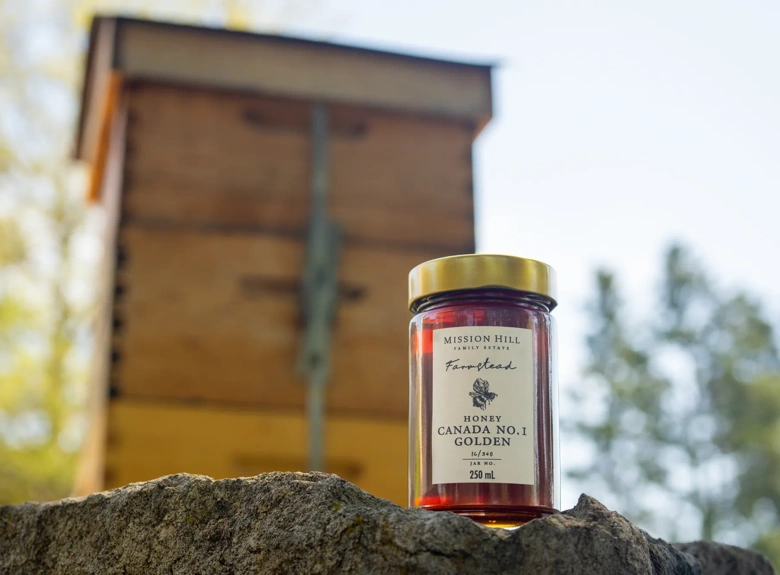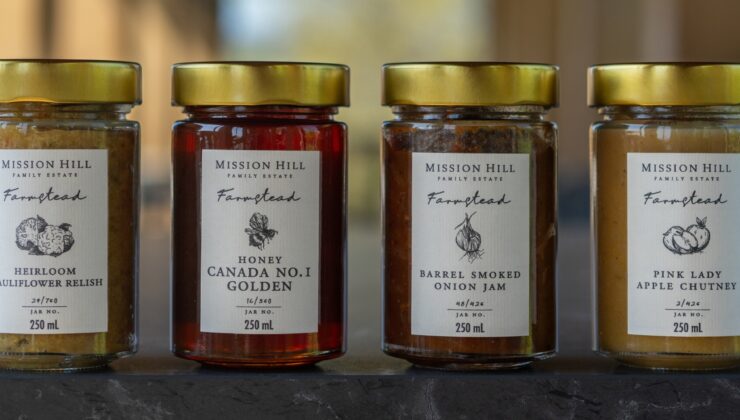Honey from the Hill
Since 2013, honeybees have been quietly working among the vines at Mission Hill Family Estate, pollinating, sustaining, and helping us cultivate a more biodiverse vineyard. Learn how these vital colonies support our land and bring a true taste of the Okanagan to every jar of Estate Honey. Read More

How Bees Sustain the Land We Love
If you have strolled the grounds at Mission Hill Family Estate in late spring, you may have noticed a gentle hum rising from a secluded corner of the property. That sound belongs to some of our hardest-working team members: ten thriving colonies of honeybees that play a quiet, but vital, role in our pursuit of sustainable, world-class wine.
Why We Began Keeping Bees
Back in 2013, we partnered with local apiarist Ingram Farms to introduce bees to the estate. Their job was simple yet profound: enhance biodiversity and pollinate the cover crops and wildflowers that anchor our regenerative farming program. Twelve seasons later, the colonies have become an integral part of Mission Hill’s ecosystem and an unmistakable symbol of our commitment to the land.
Hive Life, by the Numbers
- 10 active hives (two already strong enough to require double boxes)
- 20,000 bees per mature hive in April, climbing to 50,000 by midsummer
- 1–12 hives targeted by season’s end through careful splits or the addition of nucleus colonies
Each hive is a layered structure: a brood chamber where the queen lays her eggs, and once the colony booms, a honey super stacked above it. That super is where surplus honey is stored and where we harvest to fill our Estate Honey jars.
Caring for the Colonies
Throughout the warmer months, Ingram Farms visits the estate weekly with a focused checklist:
- Assess the health of each queen (vital to the hive, laying up to 2,000 eggs a day).
- Monitor population growth and add honey supers as colonies expand.
- Manage pests like the Varroa mite, a parasite that threatens winter survival.
- Support growth by splitting thriving hives or introducing new nucleus colonies (5,000 – 10,000 bees), ensuring balance across the apiary.
Abundant nectar sources surround the hives: flowering cover crops between vine rows, irrigated gardens, wild Okanagan blossoms, and even a small pond that supplies fresh water. Worker bees generally forage within a six-kilometre radius, carrying botanical flavours back to the combs, and ultimately into every spoonful of Mission Hill honey.
From Hive to Table

By late summer, when the honey supers grow heavy with fragrance, select frames are carefully lifted, the combs gently spun, and the Estate Honey bottled on site at the winery. There are two ways to acquire and taste our estate honey:
In the Boutique – Beautifully presented in 250g jars, available exclusively onsite while supplies last.
At The Terrace Restaurant – Whipped into dressings, brushed over stone-fruit tarts, or drizzled atop cheese boards overlooking the very vineyards our bees help sustain.




